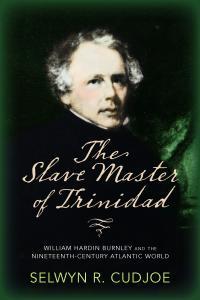Making a Truce with Reality
By Dr Selwyn R. Cudjoe
July 21, 2020
I have been following the "the polytricks" taking place in Guyana, a land that "has been a torn and tortured terrain with divisive seeds sown in the colonial waters" as Sir Hilary Beckles described it (Express, July 13.) It's not an overreach to say we are witnessing a replay of a traumatic encounter that took place years ago.
In 1970 Forbes Burnham declared Guyana a Co-operative Republic. I visited Guyana in 1972, the year in which the first Carifesta and the Non-Aligned Nations' conference took place under the aegis of Comrade-Leader Burnham. It was a new and exciting time.
I first met Martin Carter, author of the Poems of Resistance (which included his famous poem "I Come from the Nigger Yard") and A. J. Seymour, editor of Kyk-Over-Al, one of the pioneering literary magazines of the Anglophone Caribbean in Georgetown. I will never forget my astonishment at seeing a hand-written letter that I. A. Richards, a major English literary critic, had written to Seymour.
That was a big deal. I had been accepted to Cornell University's English Department to do my doctorate on literary theory. Years later, I welcomed Cheddi Jagan, Burnham's colleague of an earlier time, to speak at Harvard University where I was an assistant professor. I visited Jagan many times thereafter.
I also became friendly with Wilson Harris who spent two weeks at my residence in Wellesley as he worked on a new version of History, Fable and Myth in the Caribbean and Guianas (1995) to which I wrote an introduction. I also visited Harris at his Chelmsford residence in Essex, England, where we enjoyed many hospitable afternoons.
Harris was of mixed African, Scottish, Amerindian and possible East Indian origins. He was one of the Caribbean's best speculative, literary and cultural minds. For fifteen years, he explored Guyana's interior as a surveyor where he encountered "the enigmatic silences of remnant Amerindian cultures and the haunting landscapes of the rainforests" (London Guardian, March 9, 2018).
In 1942 he joined a government surveying expedition into the Cuyuni River region in Guyana, which he said was "a revelation to me. Multitudinous forests I had never seen before, the whisper or sigh of a tree with a tone or rhythm I had never known." Harris always emphasized the intimate connection between the land (nature) and its social inhabitants (people).
In 1953 the British invaded Guyana and nullified Jagan's electoral mandate. Interred at a local base for three months, Carter captured Guyana's political trauma in his poem, "This Is the Dark Time My Love." He lamented: "It is the season of oppression, dark metal, and tears. It is the festival of guns, the carnival of misery."
Guyana held its election on March 2, 2020. Simple arithmetic suggests that PPP/Civic was more likely to win but Keith Lowenfield, Guyana's chief election officer assigned 31 seats to that party and 32 seats to APNU, the present government.
Andy Johnson wrote two brilliant articles implying that Guyana was again about to suffer the fate Jagan suffered 67 years earlier. He noted: "All foreign election observer missions have abandoned their assignments, each one recognizing that the process is being stymied by interests inimical to the production of results consistent with the will of the Guyanese people" (Express, March 24). Canada, US and the OAS have taken a similar position.
Indians, it seems, should not be allowed to hold power again. Even one of my Trini friends could not envisage that reality. He exclaimed: "The Indians are going to rule again!" His mouth dropped when I said, "But they are the majority population there. Why shouldn't they rule the country?"
T&T will hold its election in August. A possibility exists that an Indian-led party could rule the country again. If it does not do so this year, it will do so the next time around. Yet, the same irrational fear reigns among many Afro-Trinbagonians. PNM's political leader has called UNC's leader "a traitor" because she held a different view from his. One can expect such pejorative comments to continue until August 10.
I do not know why Afro-Trinbagonians fear the inevitable rule of Indo-Trinidadians at least for the foreseeable future. The numbers do not lie. In 1946 Indians consisted of 35.1 percent of the population, Africans 46.9 percent, mixed 14.1 percent. In 1962 Indians were 36.47 percent, Blacks 43 percent, and mixed 16.2 percent. By 1990 Indians were 40.3 percent of the population, Africans 39.6 percent, and mixed 18.4 percent.
In July 2017 the CIA World Fact Book noted that Indians consisted of 35.4 percent, Africans 34.2 percent, mixed 15.3 percent, and African/Indian 7.7 percent. Based on linear regression modeling, two of my university colleagues estimate that by 2030, the Indian population will increase to 40.5 percent; Africans will decrease to 36.1 percent, and the mixed group will be to 23.2 percent.
In his Autobiographical Notes James Baldwin argued that Blacks in America, a minority population, had "to make some kind of truce with reality" even as they continually contest internal racism and economic oppression. Blacks in T&T and Guyana will have to reconcile themselves to their minority status even as they struggle for economic equity.
Although many Afro-Trinbagonians fear being a minority, we can take comfort from Harris's theory of cross-cultural existence: "It means one faction of humanity discovers itself in another; not losing its culture, but deepening itself. One culture gains from another; [while] both sides benefit from opening themselves to a new universe" (New York Times, March 16, 2018).
Although this approaching existentialist reality will produce some psychological anxiety, it doesn't mean Afro-Trinbagonians will lose their identity. It suggests that all of us can be richer because of this changing cultural condition.
Prof. Cudjoe's email address is scudjoe@wellesley.edu. He can be reached @ProfessorCudjoe.
Share your views here...

The Slave Master of Trinidad by Dr. Selwyn R. Cudjoe
|

